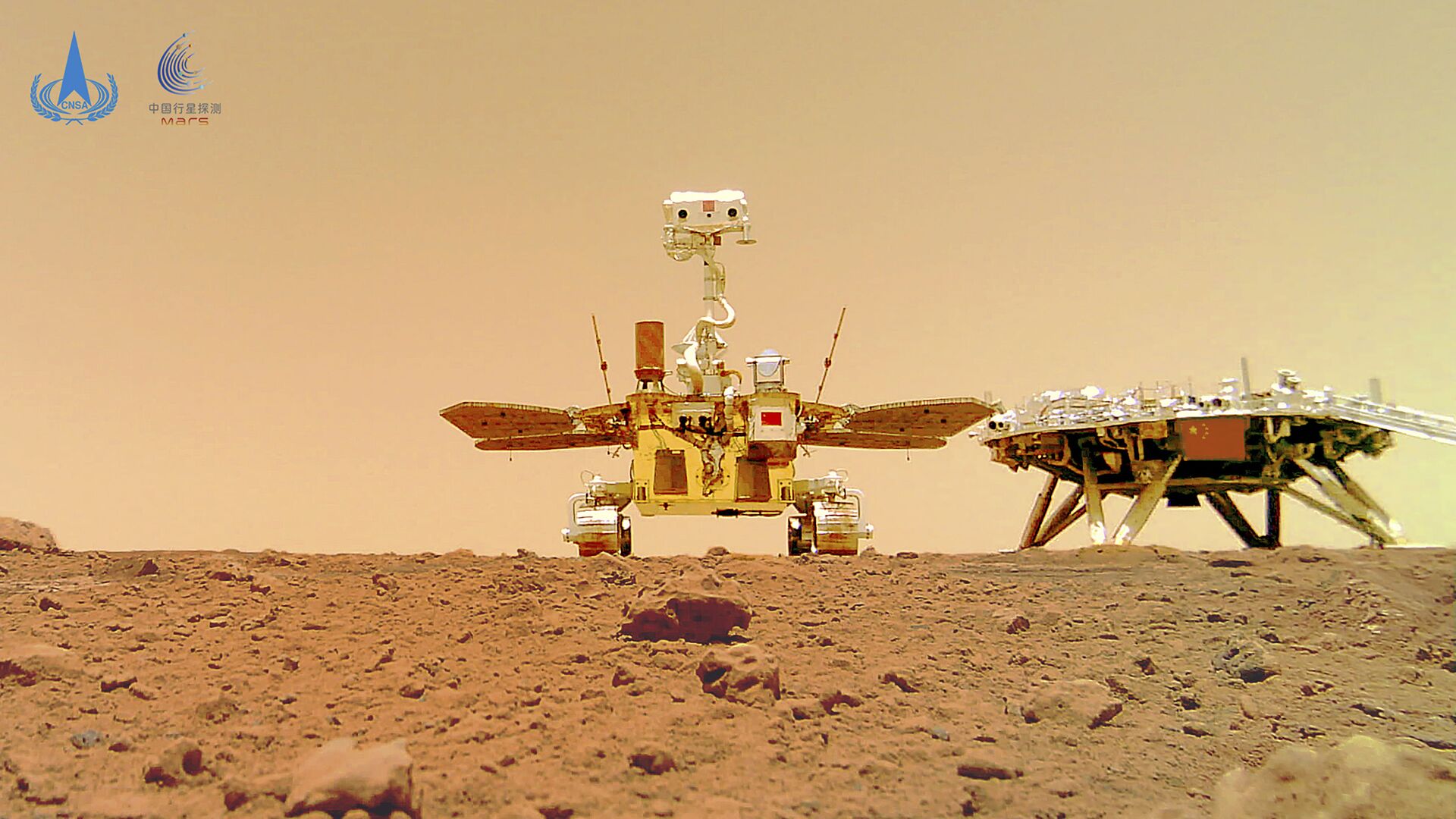https://sputnikglobe.com/20220620/china-aims-to-outpace-esa-nasa-in-returning-mars-surface-samples-to-earth-by-two-years--1096493850.html
China Aims to Outpace ESA, NASA in Returning Mars Surface Samples to Earth by Two Years
China Aims to Outpace ESA, NASA in Returning Mars Surface Samples to Earth by Two Years
Sputnik International
China’s first independent Mars mission, Tianwen-1, has completed one year in May. China has planned its next mission, to collect Mars rock samples and deliver... 20.06.2022, Sputnik International
2022-06-20T14:40+0000
2022-06-20T14:40+0000
2022-11-30T10:07+0000
nasa
european space agency (esa)
chinese national space administration (cnsa)
china
orbit
china's academy of launch vehicle technology (calt)
chinese mission to mars
sputnik
mars
satellite
https://cdn1.img.sputnikglobe.com/img/07e5/07/0a/1083352673_0:0:3640:2048_1920x0_80_0_0_963dfbef0187ac0b23b7116b1c6f616f.jpg
Continuing its remarkable feat in space, China has plans to return to Earth with Mars rock samples by July 2031, two years ahead of a joint mission proposed by NASA and the European Space Agency.The chief designer has presented two plans for returning Mars samples from the northern hemisphere with a similar schedule.The Chinese space agency will use its two powerful rockets - Long March 5 and Long March 3B - to complete the mission, named Tianwen-3.The heavy-lift vehicle Long March 5 will carry a lander and ascent vehicle onboard. According to the plan, the mission involves a single Mars landing and returning the sample from the same site. According to a presentation at the 120th anniversary of Nanjing University, Chinese scientists would use surface sampling, drilling, and mobile intelligent sampling during the mission.This indicates that China's space agency would not use a rover to collect rock samples from different locations, unlike the proposed mission by NASA and the European Space Agency.The ascent vehicle will bring the samples from the surface of Mars up to the Mars Orbit at a speed of 4.5 kilometers per second. The second rocket, Long March 3B, will carry an orbiter and return module. Once the ascent vehicle brings the Mars samples to orbit, spacecraft will rendezvous with and capture the orbiting pieces before returning them to Earth. As per the plan, the orbiter will depart in late October 2030 and returns to Earth in July 2031.NASA and the European Space Agency are tentatively planning a sample-return lander mission in 2028 with a comeback to Earth by 2033. The 2023 NASA Budget noted that the Mars sample return would advance human exploration by demonstrating key capabilities such as round-trip planetary operations, planetary protection, and precision landing on another planetary body.
china
mars
Sputnik International
feedback@sputniknews.com
+74956456601
MIA „Rossiya Segodnya“
2022
Rishikesh Kumar
https://cdn1.img.sputnikglobe.com/img/07e4/08/04/1080055820_0:0:388:389_100x100_80_0_0_40018ee210946d65d49ffba4f4c008e1.jpg
Rishikesh Kumar
https://cdn1.img.sputnikglobe.com/img/07e4/08/04/1080055820_0:0:388:389_100x100_80_0_0_40018ee210946d65d49ffba4f4c008e1.jpg
News
en_EN
Sputnik International
feedback@sputniknews.com
+74956456601
MIA „Rossiya Segodnya“
Sputnik International
feedback@sputniknews.com
+74956456601
MIA „Rossiya Segodnya“
Rishikesh Kumar
https://cdn1.img.sputnikglobe.com/img/07e4/08/04/1080055820_0:0:388:389_100x100_80_0_0_40018ee210946d65d49ffba4f4c008e1.jpg
nasa, european space agency (esa), chinese national space administration (cnsa), china, orbit, china's academy of launch vehicle technology (calt), chinese mission to mars, sputnik, mars, satellite
nasa, european space agency (esa), chinese national space administration (cnsa), china, orbit, china's academy of launch vehicle technology (calt), chinese mission to mars, sputnik, mars, satellite
China Aims to Outpace ESA, NASA in Returning Mars Surface Samples to Earth by Two Years
14:40 GMT 20.06.2022 (Updated: 10:07 GMT 30.11.2022) China’s first independent Mars mission, Tianwen-1, has completed one year in May. China has planned its next mission, to collect Mars rock samples and deliver them to Earth, a feat never attempted by any space exploration agency.
Continuing its remarkable feat in space, China has plans to return to Earth with Mars rock samples by July 2031, two years ahead of a joint mission proposed by NASA and the European Space Agency.
On Monday, Sun Zezhou, chief designer of China’s first independent Mars mission, Tianwen-1, announced that the multi-launch profile will lift off in late 2028 and deliver samples to Earth in July 2031. The Mars landing is planned for September 2029.
The chief designer has presented two plans for returning Mars samples from the northern hemisphere with a similar schedule.
The Chinese space agency will use its two powerful rockets - Long March 5 and Long March 3B - to complete the mission, named Tianwen-3.
The heavy-lift vehicle Long March 5 will carry a lander and ascent vehicle onboard. According to the plan, the mission involves a single
Mars landing and returning the sample from the same site.
According to a presentation at the 120th anniversary of Nanjing University, Chinese scientists would use surface sampling, drilling, and mobile intelligent sampling during the mission.
This indicates that China's space agency would not use a rover to collect rock samples from different locations, unlike the proposed mission by NASA and the European Space Agency.
The ascent vehicle will bring the samples from the surface of Mars up to the Mars Orbit at a speed of 4.5 kilometers per second.
The second rocket, Long March 3B, will carry an orbiter and return module. Once the ascent vehicle brings the Mars samples to orbit, spacecraft will rendezvous with and capture the orbiting pieces before returning them to Earth. As per the plan, the orbiter will depart in late October 2030 and returns to Earth in July 2031.
NASA and the European Space Agency are tentatively planning a sample-return lander mission in 2028 with a comeback to Earth by 2033.
The 2023 NASA Budget noted that the Mars sample return would advance human exploration by demonstrating key capabilities such as round-trip planetary operations, planetary protection, and precision landing on another planetary body.


